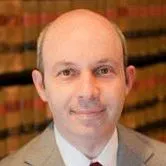First Thoughts on the Tactics of Nominating John Roberts for Chief

on Sep 5, 2005 at 8:44 am
The President’s nomination of John Roberts to be Chief Justice of the United States simplifies, but in other ways complicates, the effort to give the Supreme Court a full complement of nine Justices. It is certain now, just as it was when news of William Rehnquist’s death was released Saturday night, that there is no practical way to confirm two nominees by the Term’s effective start in late September or its formal start on October 3. The looming questions now involve the timing of the Roberts confirmation hearings, whether Justice O’Connor will take her seat at that time, and how long it will take to confirm her successor.
The President’s announcement will initiate a pro forma process in which the nomination of John Roberts to Sandra Day O’Connor’s Associate Justice seat is withdrawn and a new nomination for the seat of Chief Justice is sent to the Senate. The President’s statement — which focused on having Judge Roberts on the Court by the start of the Term — seemed carefully calibrated to urge the Senate to move promptly but not express an expectation as to when precisely the hearings would start. A delay of the Roberts hearings of a few days was already almost certain in light of William Rehnquist’s funeral on Wednesday, and now a further delay — perhaps until next Monday — seems very likely as a nod to the significance of the new position to which Roberts has been nominated.
Justice O’Connor now faces a dilemma. She presumably has made plans for the fall consistent with her personal reasons for leaving the Court. She knows that returning to the bench — only to be replaced a month or so later — provides the Court little or no practical benefit because a Justice’s vote does not count unless she is sitting at the time the case is decided, a process that generally takes at least two months for even non-controversial cases, and generally three or more months for the closely divided five-to-four cases in which her vote would be dispositive. On the other hand, Justice O’Connor is a committed public servant, and the fact that she would be inconvenienced would not dissuade her from returning to the bench if her presence was required.
As things stand, Justice O’Connor will return to the Court. But that could change. Justice O’Connor’s resignation follows the model of Thurgood Marshall’s, which was similarly effective upon the confirmation of a successor. But when Justice Thomas’s confirmation was delayed, Marshall submitted a second resignation letter leaving the Court effective immediately. Marshall (unlike O’Connor) was sick and largely unable to perform the duties of office, but nothing would prevent Justice O’Connor from taking the same step of accelerating her departure from the Court.
The President’s statement that he would nominate a successor for Justice O’Connor “in a timely manner” — which can be read to mean “not until the Roberts hearings are done” — suggests that the President may himself be relying on the fact that she would continue to sit in the meantime. If so, the calculus of the White House would likely be that they are better off decoupling the two sets of hearings. But there seems inevitably to be some cost to the Administration. The nomination of a doctrinaire conservative to replace the Chief Justice could have been explained as ideologically neutral for the Court, as the new nominee would not move that seat to the right. Moving Judge Roberts to the seat of Chief Justice, by contrast, opens up again the debate over what Democrats will describe as the “O’Connor” seat — that of a moderate conservative. There seems a marked difference, for example, in substituting Michael Luttig for Sandra Day O’Connor than for William Rehnquist.
The speed with which the President acted this morning suggests that Roberts was at the top of the White House’s list all along for the mistakenly anticipated resignation of the Chief Justice this summer. Recent developments — in which there has been some inevitable opposition but no serious threat to the confirmation has emerged — likely only solidified the President’s views of the matter. What is obviously unclear is to whom the President will turn for the slot of Associate Justice.


